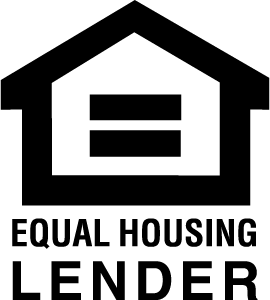
Joe Brown, President of Edina Realty Mortgage, answers common questions about debt-to-income ratios in this three-part “Ask an expert” series. In the series finale, Joe reviews different ways you can lower your debt-to-income ratio for a better chance at consideration from a loan lender.
How can I lower my debt-to-income ratio?
Key Insights
- The lower your debt-to-income ratio, the more favorably lenders consider your loan application.
- Increasing your income and lowering your debt are two ways to improve your debt-to-income ratio.
- Consider working with a REALTOR® to find a home that best fits your needs and your budget.
In part one and part two of the three-part series, I talked about how it’s important to know the terminology used in the business. Now that you know what a debt-to-income ratio is and how to find it , it’s time to learn what you may be able to do about it.
Lenders have a specific range of debt-to-income ratio percentages they look for when granting a loan. In part two, we used an example to showcase how to calculate front-end and back-end ratios–one was at the top of a lender's percentage range, and the other was just outside it. If you find yourself in such a situation, know that there are options to lower your debt-to-income ratio and have a better chance of being approved by a lender. Let’s look at how.
Option one: Lower your anticipated PITI
The easiest way to lower your debt-to-income ratio is to find a home that better fits your budget. For example, if you are dreaming of a large riverfront home in Stillwater, but your debt-to-income ratio is too high, you could look for a less expensive “starter home” that is within your means. You could also work with your REALTOR® to find a nearby home with lower taxes, as housing taxes are an important component of the PITI calculated in your debt-to-income ratio.
Option two: Increase your income
Now might be the time to ask for a raise or get a side hustle to help supplement your income. A second job may not be feasible for most, but participating in freelance work or picking up a gig job (think Uber or Doordash), may be just the boost you need to change your debt-to-income ratio. But unless you’re steadily raking in more income, the best thing you could do with any extra money is to put it toward your debt rather than banking on that money being available each month to meet your obligations.
Option three: Reduce your debt
While you can increase your income, most people find it easier to reduce their debt. Start by reviewing your monthly spending to see if you can minimize or remove non-necessities, including:
- Dining out
- Fast food, including coffee shops
- Entertainment, including cable subscriptions or online streaming services
- Vacations or trips
Another idea is to sign up for your bank’s online budgeting system to find out how much you spend on food, entertainment, lattes and more. There are also plenty of websites and apps that can help you track patterns in discretionary spending. Reducing your monthly budget allows you to put more money down toward your debt, which in turn will improve your debt-to-income ratio.
A few important notes
The last thing you want to do is stretch yourself too thin. While it can be hard to walk away from a dream home, it’s much less painful than finding yourself in serious debt. Lowering your debt-to-income ratio can be a slow process, but it eventually pays off.
Avoid taking on more debt and use your credit card only when you can pay it off immediately. Instead of buying a new car, continue to drive the one you’ve paid off. You may find that with a few minor tweaks to your habits, you can put away more each month than previously assumed.
Whether you save $20 each month dining in or earn $200 doing some extra work, put it toward paying down your overall debt. Slowly but surely, you may be able to lower your debt-to-income ratio.
Need help getting started?
If you’re ready to review your debt-to-income ratio, or you hope to apply for a mortgage, I encourage you to reach out today and get in touch with an Edina Realty Mortgage consultant or an Edina Realty agent in your area.
Edina Realty Mortgage is an affiliate of Edina Realty. See Affiliated Business Arrangement Disclosure Statement
Prosperity Home Mortgage, LLC may operate as Prosperity Home Mortgage, LLC dba Edina Realty Mortgage in Minnesota and Wisconsin. ©2024 Prosperity Home Mortgage, LLC dba Edina Realty Mortgage. (877) 275-1762. 3060 Williams Drive, Suite 600, Fairfax, VA 22031. All first mortgage products are provided by Prosperity Home Mortgage, LLC. Not all mortgage products may be available in all areas. Not all borrowers will qualify. NMLS ID #75164 (For licensing information go to: NMLS Consumer Access at http://www.nmlsconsumeraccess.org/) Licensed by the Department of Financial Protection and Innovation under the California Residential Mortgage Lending Act. Licensed by the Delaware State Bank Commissioner. Georgia Residential Mortgage Licensee. Massachusetts Mortgage Lender and Mortgage Broker MC75164. Licensed by the NJ Department of Banking and Insurance. Licensed Mortgage Banker-NYS Department of Financial Services. Rhode Island Licensed Lender. Rhode Island Licensed Loan Broker. Rhode Island Licensed Third-Party Loan Servicer. Also licensed in AK, AL, AR, AZ, CO, CT, DC, FL, ID, IL, IN, KS, KY, LA, MD, ME, MI, MN, MO, MS, MT, NC, ND, NE, NH, NM, NV, OH, OK, OR, PA, SC, SD, TN, TX, UT, VA, VT, WA, WI, WV and WY
Prosperity Home Mortgage, LLC is not affiliated with or endorsed by any government agencies. Some and/or all qualifying criteria may be set by independent third-party program sponsors. Not all borrowers will qualify. Contact your mortgage consultant for program eligibility and details.
Prosperity Home Mortgage, LLC dba Edina Realty Mortgage does not offer financial advice. This information is provided for informational purposes only and does not constitute legal, tax, or financial advice.









 ©2025 Prosperity Home Mortgage LLC®. (877) 275-1762. 3060 Williams Drive, Suite 600, Fairfax, VA 22031. All first mortgage products are provided by Prosperity Home Mortgage, LLC®. Not all mortgage products may be available in all areas. Not all borrowers will qualify. NMLS ID #75164 (For licensing information go to: NMLS Consumer Access at
©2025 Prosperity Home Mortgage LLC®. (877) 275-1762. 3060 Williams Drive, Suite 600, Fairfax, VA 22031. All first mortgage products are provided by Prosperity Home Mortgage, LLC®. Not all mortgage products may be available in all areas. Not all borrowers will qualify. NMLS ID #75164 (For licensing information go to: NMLS Consumer Access at